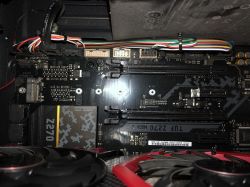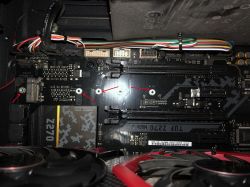FAQ
TL;DR: Use a Phillips #0 driver and 1 mounting screw for M.2 installs; “You need a Philips 0 (PH0) screwdriver.” This FAQ helps PC builders and laptop upgraders pick the right tool and avoid removing standoffs. [Elektroda, willyvmm, post #17651534]
Why it matters: Using the correct driver and leaving standoffs alone prevents stripped screws, damaged threads, and poor seating.
Quick Facts
- Driver: Phillips #0 (PH0) is recommended for M.2 mounting screws on PCs. [Elektroda, willyvmm, post #17651534]
- Typical M.2 mounting screw: M2 × 3 mm machine screw for 22‑mm‑wide modules. [“Intel NUC M.2 Installation Guide”]
- Don’t remove the silver threaded posts; they are the fixed anchors you screw into. [Elektroda, enhanced, post #17651526]
- Form factors: 2230, 2242, 2260, 2280, 22110; first two digits = width (22 mm common), last two = length. [“M.2 — Wikipedia”]
- Tighten the screw until snug; stop once the module is flat and secure. [“How to install an M.2 SSD in a PC — Crucial”]
Which screwdriver size fits an M.2 SSD screw?
Use a Phillips #0 (PH0) precision screwdriver. “You need a Philips 0 (PH0) screwdriver.” Keep the bit centered and apply steady downforce to avoid cam‑out. [Elektroda, willyvmm, post #17651534]
Do I remove the silver posts near the M.2 slot?
No. Those are fixed standoffs with threads for the M.2 screw. “Do not move these screws with threads.” They stay in place to match the module length. [Elektroda, enhanced, post #17651526]
What size is the M.2 mounting screw?
Typical boards use an M2 × 3 mm machine screw. M2 indicates 2.0 mm thread diameter. The 3 mm specifies the length. Always confirm with your motherboard manual before buying replacements. [“Intel NUC M.2 Installation Guide”]
What do 2230, 2242, 2260, 2280, and 22110 mean?
They encode module size: first two digits are width in millimeters, last two are length. 22×80 mm (2280) is widely used in consumer desktops and laptops. This numbering standard ensures hole positions match the drive length. [“M.2 — Wikipedia”]
How do I install an M.2 SSD correctly?
- Insert the M.2 module at a slight angle into the keyed socket.
- Lower it to the matching standoff hole (e.g., 2280) and align.
- Secure with the M2 × 3 mm screw until snug; do not over‑tighten. [“How to install an M.2 SSD in a PC — Crucial”]
The screw head is tiny—should I try a PH00 driver?
Start with PH0. PH00 is smaller and can slip or strip the head. Use PH00 only if the screw clearly fits that bit. A quality PH0 precision driver usually grips best. [Elektroda, willyvmm, post #17651534]
My standoff looks hex—do I need a hex socket to move it?
No. The hex shape identifies the standoff, not a removable bolt. Leave it where it is. It provides the threaded hole that the M.2 screw engages. [Elektroda, enhanced, post #17651526]
The M.2 screw is missing—what should I do?
Check your motherboard accessory pack first. Typically, the SSD package does not include the M.2 mounting screw. If missing, contact your motherboard vendor or buy the screw your board specifies. [“Samsung 970 EVO Plus User Manual”]
Which hole should I use to secure the module?
Use the hole that matches the drive’s length code. Example: a 2280 drive secures at the 80 mm position. Align the module, press it flat, and fasten there. [“M.2 — Wikipedia”]
How tight should I fasten the M.2 screw?
Tighten until the module sits flat and the screw feels snug. Do not torque hard. Over‑tightening risks stripping the M2 threads or the screw head. [“How to install an M.2 SSD in a PC — Crucial”]
I stripped the M.2 screw—how can I remove it safely?
Press a wide rubber band between bit and head for extra grip. If that fails, use precision pliers to gently turn the head. Replace the damaged screw afterwards. [“How to Remove a Stripped Screw — iFixit”]
What if the threaded insert won’t turn at all?
It may be a captive threaded insert or rivet nut. These are non‑removable anchors for the M.2 screw. “Non‑removable… something like rivet nuts.” Do not force them. [Elektroda, wojtek1234321, post #17651523]
Can I use a longer screw like M2 × 4 if that’s all I have?
Use the length your board specifies. Many desktop boards specify 3 mm. Longer screws can bottom out. Stick to the specified length to avoid issues. [“Intel NUC M.2 Installation Guide”]
Are there tool‑free M.2 mounting options?
Yes. Some ASUS motherboards include Q‑Latch, a tool‑free retainer that replaces the screw. It speeds installs and prevents stripped screw heads. [“ASUS Q‑Latch — Overview”]





